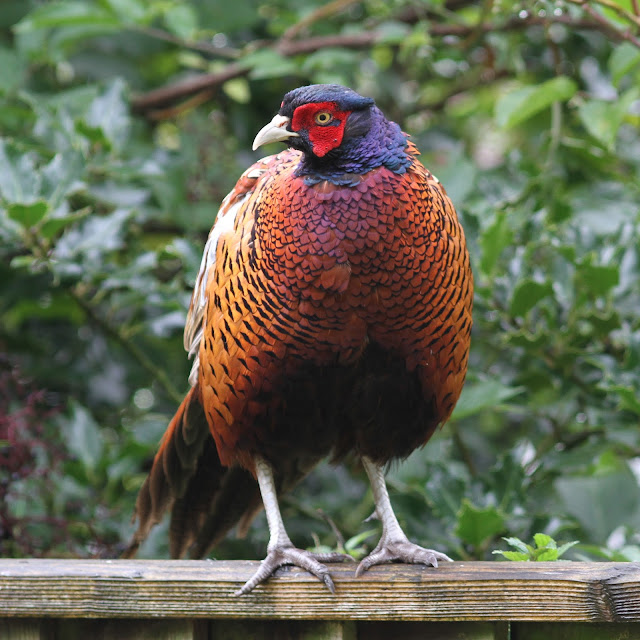This is "my" pheasant keeping an eye on me in the kitchen garden this week. He probably thinks of me as "his" human.
He still comes to the door almost every day to ask for food, preferring peanuts to sunflower hearts.
The common pheasant (Phasianus colchicus) is a widespread game bird now found in many parts of the world. It was introduced to the UK by the Normans, and perhaps by the Romans, but has only been extensively reared for shooting since the 1830s. Around 35-40 million birds are released each year for the four month shooting season (October to January). Just over a third of those are shot and another third or so are predated by foxes. Perhaps 5-13% are killed on the roads and a smaller number, perhaps up to 5%, are killed by buzzards. Some survive to live wild and breed and they are common sight in the countryside all year round. This map is from the BTO Bird Atlas.
Common pheasants are becoming more common!
Common pheasants are native to Asia and exist as several subspecies. Most of the birds in this country are hybrids, mainly of the Caucasus type and the Mongolian type. "My" bird is mainly of the former, with no neck ring, while these ring-necked birds probably have more Mongolian ancestry.
Listen to the BBC Radio 4 Tweet of the Day on the common pheasant here. Watch several short BBC Nature videos on common pheasants here. Read a selection of BBC Food pheasant recipes here.









I like this pheasant!!!
ReplyDeletethomasbirds.blogspot.com